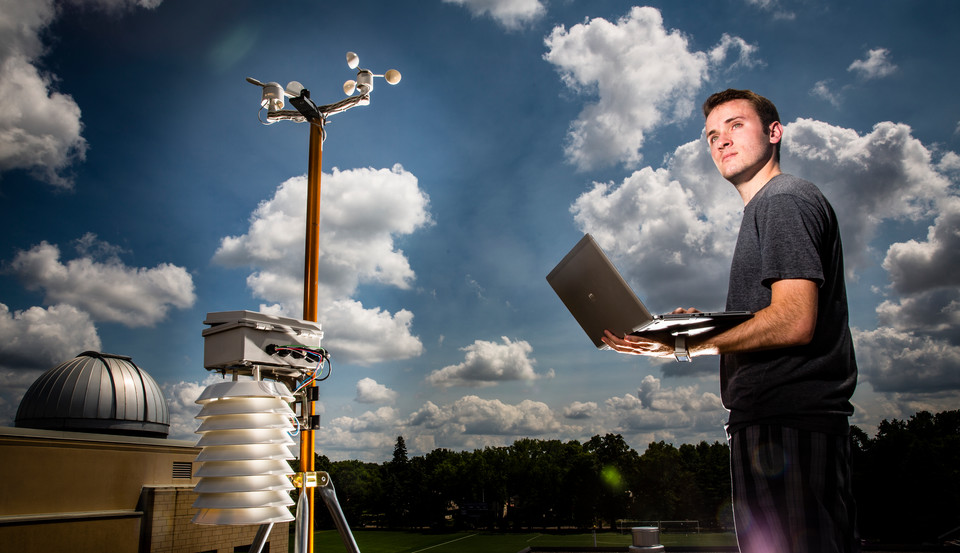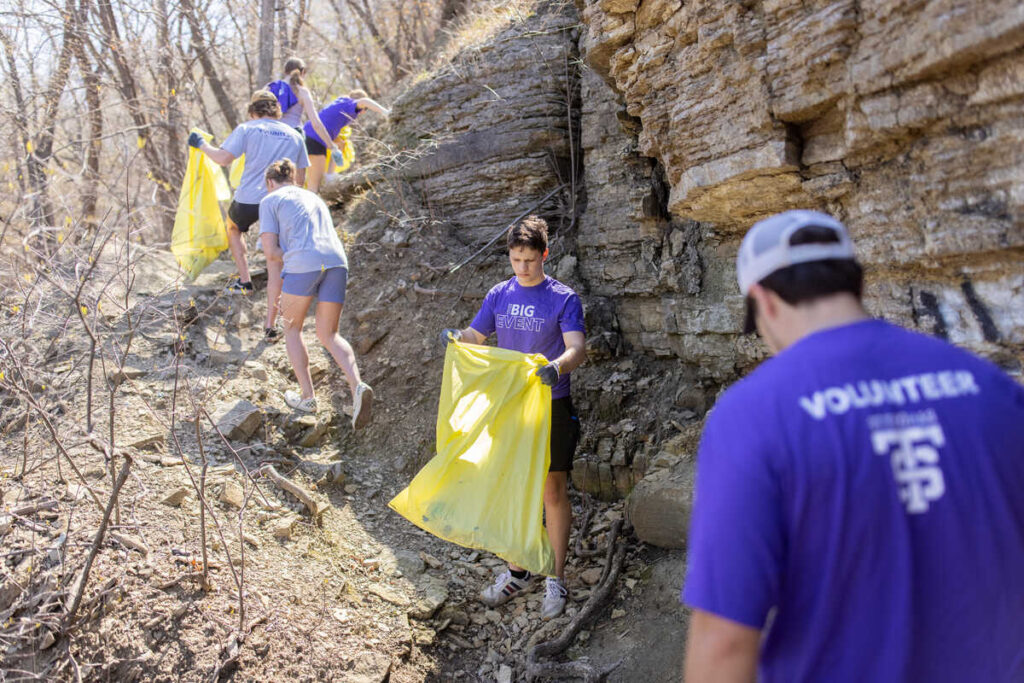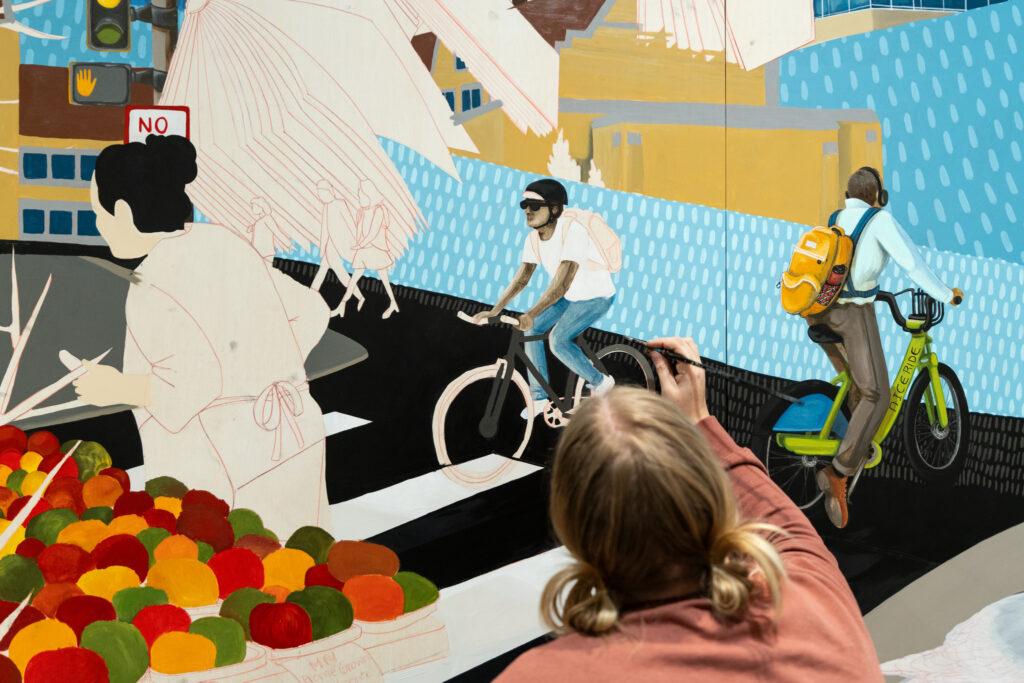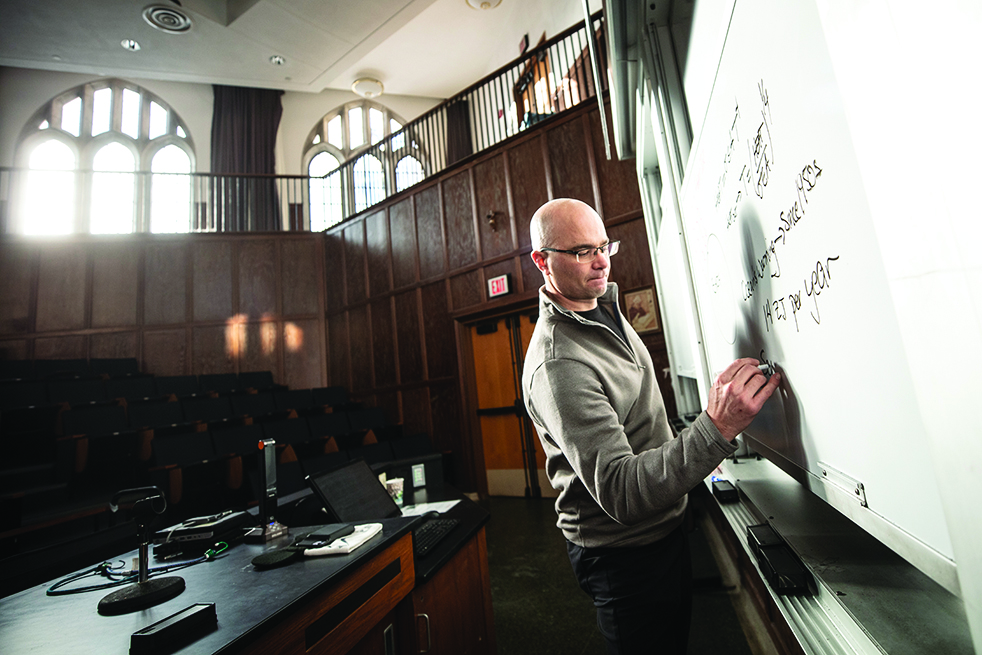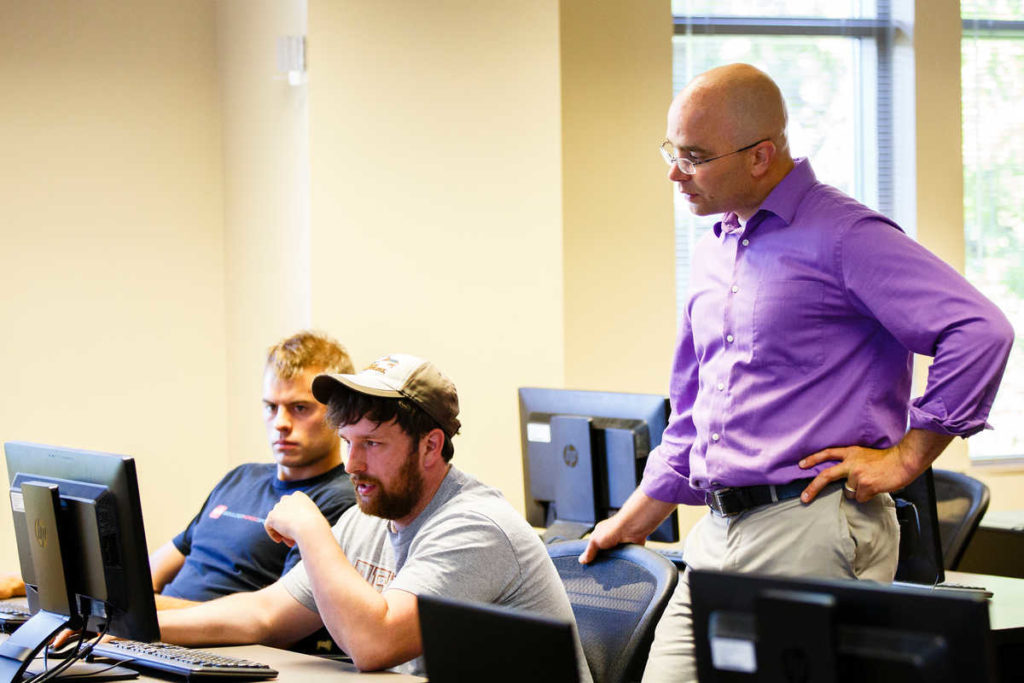The weather station aspect of the St. Thomas microgrid research and testing facilities has been custom designed by St. Thomas engineering faculty and students. Located on the roofs of the Facilities and Designs Center and McCarthy Gym on the university’s St. Paul south campus, the facility is funded by a $2.1 million grant from the Xcel Energy Renewable Development Fund.
Custom designing the project comes with complex challenges, though, and engineering professor Greg Mowry easily laid out the list of work that still needs to be done on the weather station.
“It’s a fun project ... but it has to be autonomous. We can’t run power directly from an outlet … and the ceilings are too thick to wirelessly beam [data] through the metal. We basically have to make a wireless transmitting system to get the data somewhere, and it has to be self powered,” he said. “The weather station part only took about three months to build, and now we’re spending about six months figuring out how we’re keeping it powered by solar panels and then how to wirelessly transmit data.”
Because of the complexity, when I asked Mowry what aspects senior Zach Emond was helping with as a research assistant over the summer, I expected specific parts.
“All of it,” Mowry said with a smile.
It’s a purposeful attitude Mowry takes with any student researchers, he said.
“It’s, ‘Here’s where we want to be, here’s where we are. You get to figure out how to get from A to B,’” Mowry said. “Your job basically becomes to figure it out. If you don’t know something, that’s great; let’s talk. If you do know something, even better; let’s talk some more.”
For Emond, being trusted with such large challenges and bringing his own insights has been a huge benefit during his time at St. Thomas.
“I love it. I’ve been doing research since my freshman summer, and it’s nice to see a problem and think, ‘I can do that,’ and then go figure it out,” he said. “The first time you start doing a research project is kind of overwhelming. The first year … was a balancing act. The classes are all that theoretical stuff, and then you come and have to learn to apply it. How do I actually solve these things? It was a little overwhelming, but after a while I got used to it. I get to class now and class has gotten easier; I don’t just look at the theoretical stuff but about how it’s going to be applied. It’s made everything that much easier.”
Mowry said having undergraduate students contribute to projects is a huge part of their potential success because they bring fresh perspective and ideas. Just as importantly, their independence means every step forward is their own.
“If I tell people how to do things, it’s double bad. Number one, they learn how I think. That’s really bad. … Number two, a big part of learning is by doing, trying and failing. In that [research] environment they’ll have ideas, try to do things, it will crash and burn, then we’ll dialogue … and then it’s back to the lab,” Mowry said. “They figure a lot of stuff out on their own. They’re the primary doers. The projects are consequently their projects, not my projects.”
Emond has flourished under that model, developing technical skills and gaining practical experience that has exposed him to his potential future.
“Before this I thought renewable energy was really cool, but I wasn’t really into it. Ever since working on this, I’ve changed and said I could see myself doing this beyond just a project,” he said. “I knew I was going into power, but I didn’t know I could do power and renewable energy. It’s kind of swayed me toward this stuff for a potential career.”
